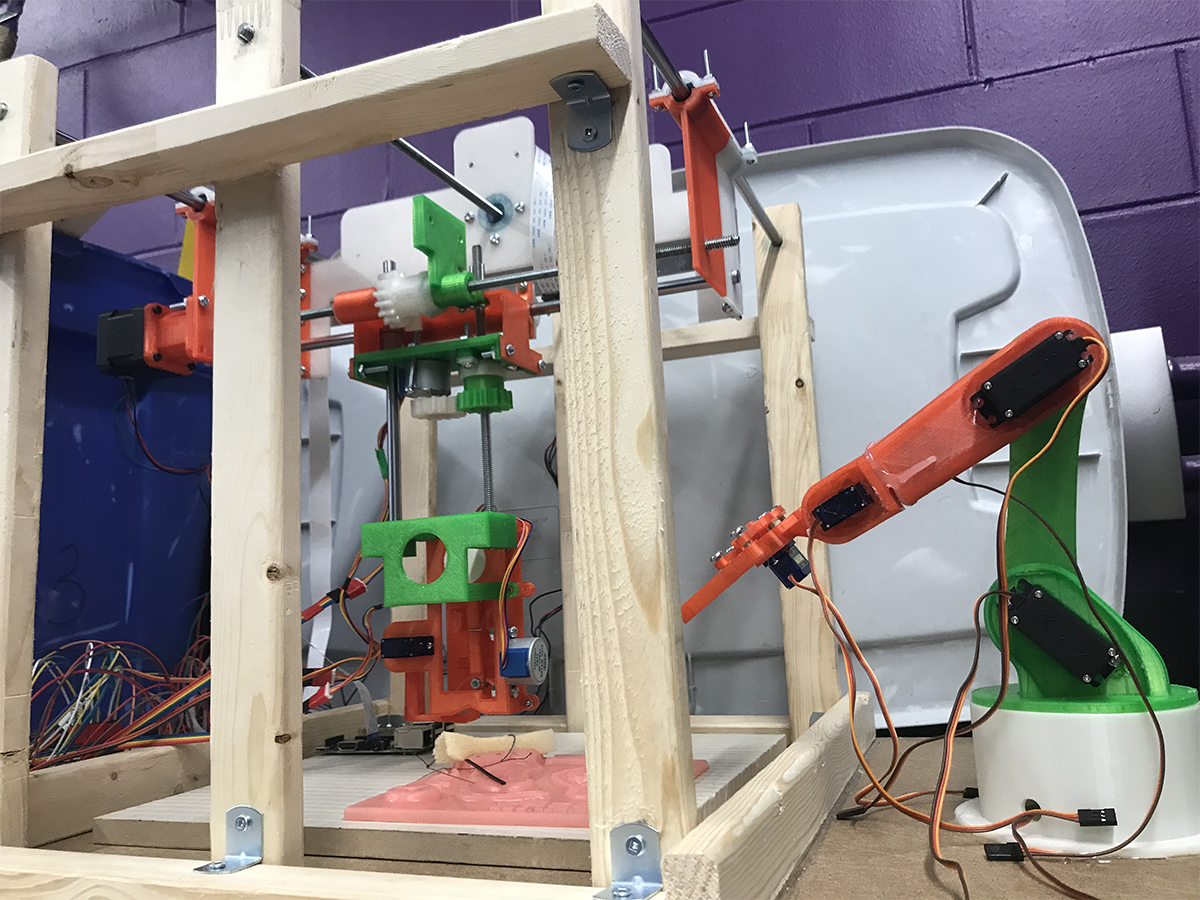Long Wait Times
It can be time consuming to travel to a hospital, wait for a doctor to become available so that the laceration can be examined, and prepare for the manual suturing procedure.
An autonomous medical device capable of performing a
suturing procedure without any human assistance.
6 Million lacerations are treated in Emergency Departments annually at an estimated cost of at least $3 Billion. Adverse effects are listed below.

It can be time consuming to travel to a hospital, wait for a doctor to become available so that the laceration can be examined, and prepare for the manual suturing procedure.

The longer it takes to get medical treatment, the greater the delay before an employee can return to work. This can be costly for a company and may lead to missed deadlines.

Invoices from doctors and hospitals can be expensive and frustrating to deal with, especially if coverage or insurance is not available to the individual who was injured.
Our medical device seeks to alleviate the aforementioned issues by automating the suturing procedure so that treatment for a laceration can be provided efficiently and conveniently. A patient will simply slide the injured limb into the space within the device, the laceration will be detected via our computer vision algorithms, and the mechanical suturing arm will carry out the medical procedure without requiring any manual instructions.
Existing technology already on the market is cumbersome, slow, or assistive at best. In contrast, our medical device excels in the following areas:
The device is space efficient and lightweight. It can be easily carried by a single person.
The device can detect suturing entry and exit points within 2 millimeters.
The device performs the suturing procedure faster than a medical practitioner.
The device can identify lacerations ranging from 1.0 cm to 10.0 cm in length.
The device has detachable and disposable components, ensuring a sterile environment.
The device can complete 100 suturing procedures before maintenance may be required.
From Left to Right: Umer Kamran, Jeff Jun, Aly Mirza.
Jeff and Umer are responsible for the design and manufacturing of the mechanical suturing arm
and the implementation of the computer vision algorithms. Aly is leading the development of
the gantry workspace as well as the integration of electronics and actuators.

There is a lot of progress being made with regards to our medical device. Interested in following along and keeping up to date with the newest and coolest features? Check out our weekly posts by selecting a time frame below!

The completed autonomous medical device, capable of detecting localized lacerations and performing suturing operations with minimal human intervention, is presented on the left.
Have any questions or comments? Interested in contributing towards technology that has the potential to revolutionize the medical industry, either by joining as a member or as a sponsor? Reach out to us through one of the methods below!